Following in the footsteps of the Midcentury elite, contemporary firms in Palm Springs are striving to maintain the flavour of Desert Modernism left by some of the world’s best architectural minds, while responding to today’s challenges and adding something of their own.
Historically, there’s always been more room to experiment in Palm Springs compared with the more confined lots in LA. The landscape also plays a part; the bowl shaped valley accentuates the sharp lines and spaceship styles of the buildings. John Lautner’s timeless Elrod House is famous for its circular concrete canopy, while Albert Frey’s soaring Frey House II juxtaposes nature with a corrugated-aluminium roof. The Modernist movement has been well-preserved over the years and the houses remain a huge attraction; Palm Springs Mod Squad even offers access inside the most exclusive homes.
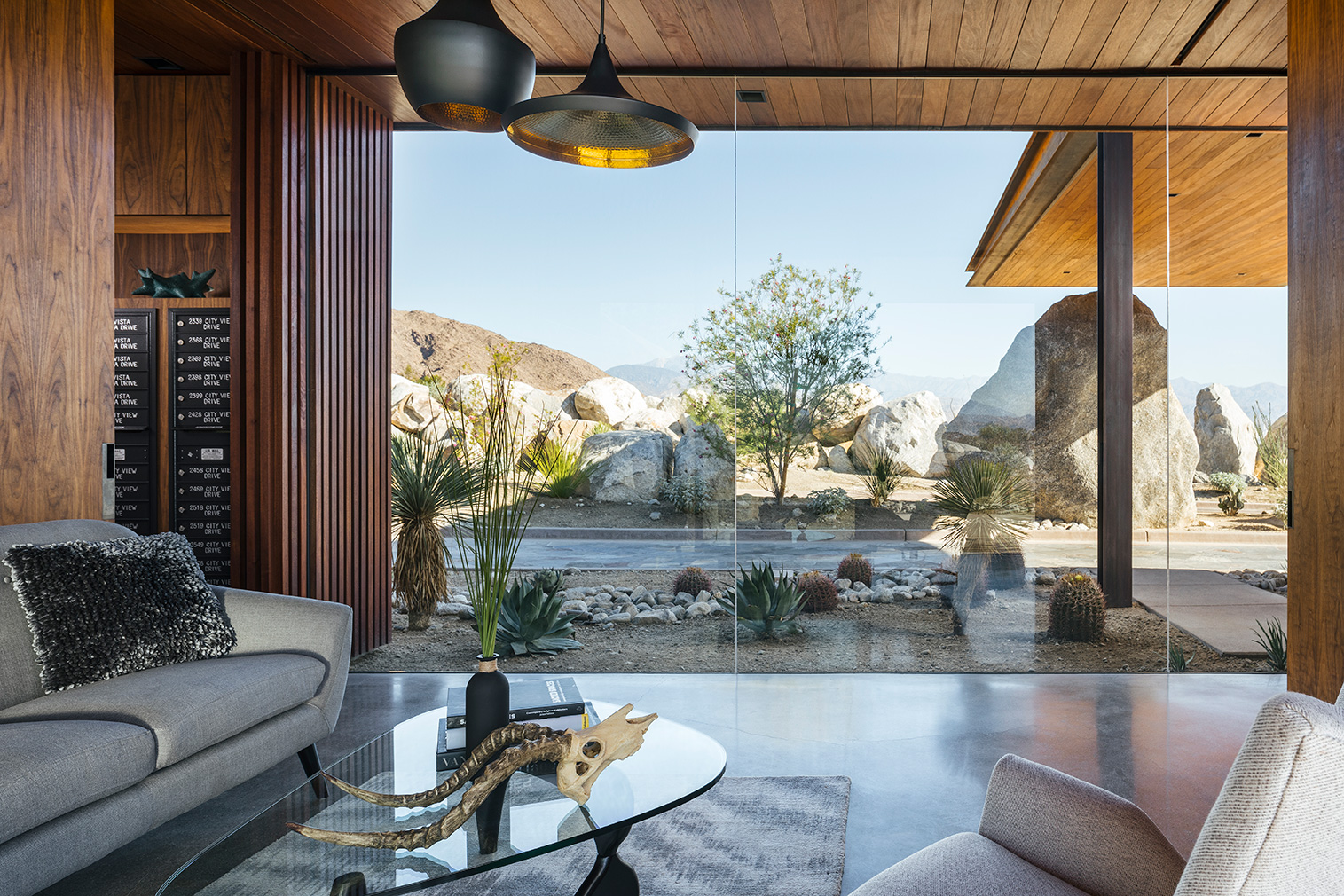
Today’s architects are drawing on this legacy, while reacting to contemporary attitudes to environmentally conscious living and a sensitivity to the desert’s surroundings.
‘We’re creating a new language in response to modern society’s needs,’ says resident architect Sean Lockyer of Studio AR&D Architects. ‘We take core principles from [Midcentury Modernism] but implement them in a forward-thinking way.’
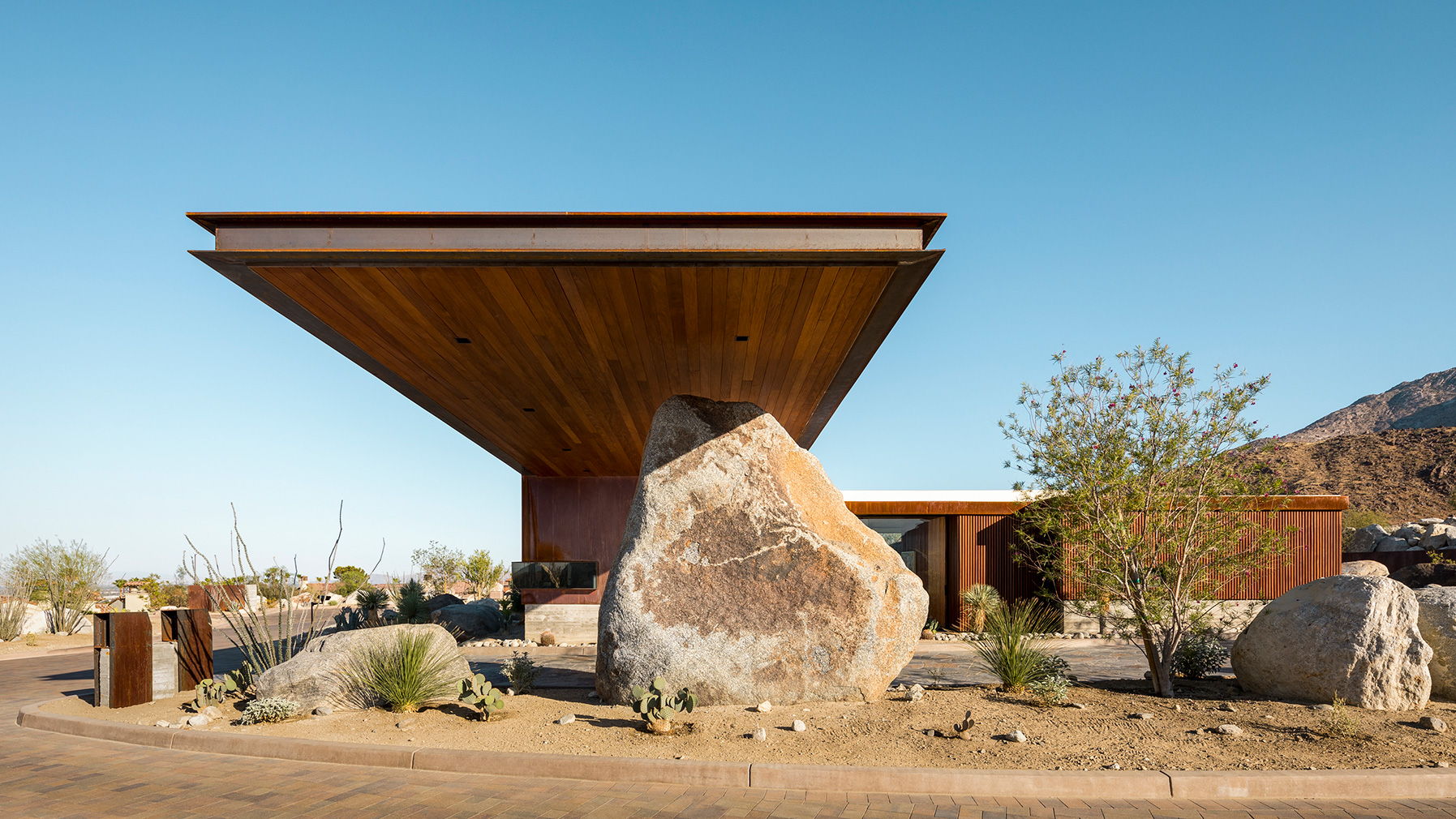
Lockyer worked on the new Desert Palisades complex, which features 110 custom home lots. This particular project took 12 years to complete because of building restrictions, but Lockyer explains: ‘We wanted it to look like it was launching off the hillside.’ This seems appropriate given the Mars-like terrain. Following strict rules requires greater creativity – they have to ‘flatten it out,’ as Lockyer puts it, rather than build up. He adds: ‘It allows originality – the restrictions require new materials and a different look.’
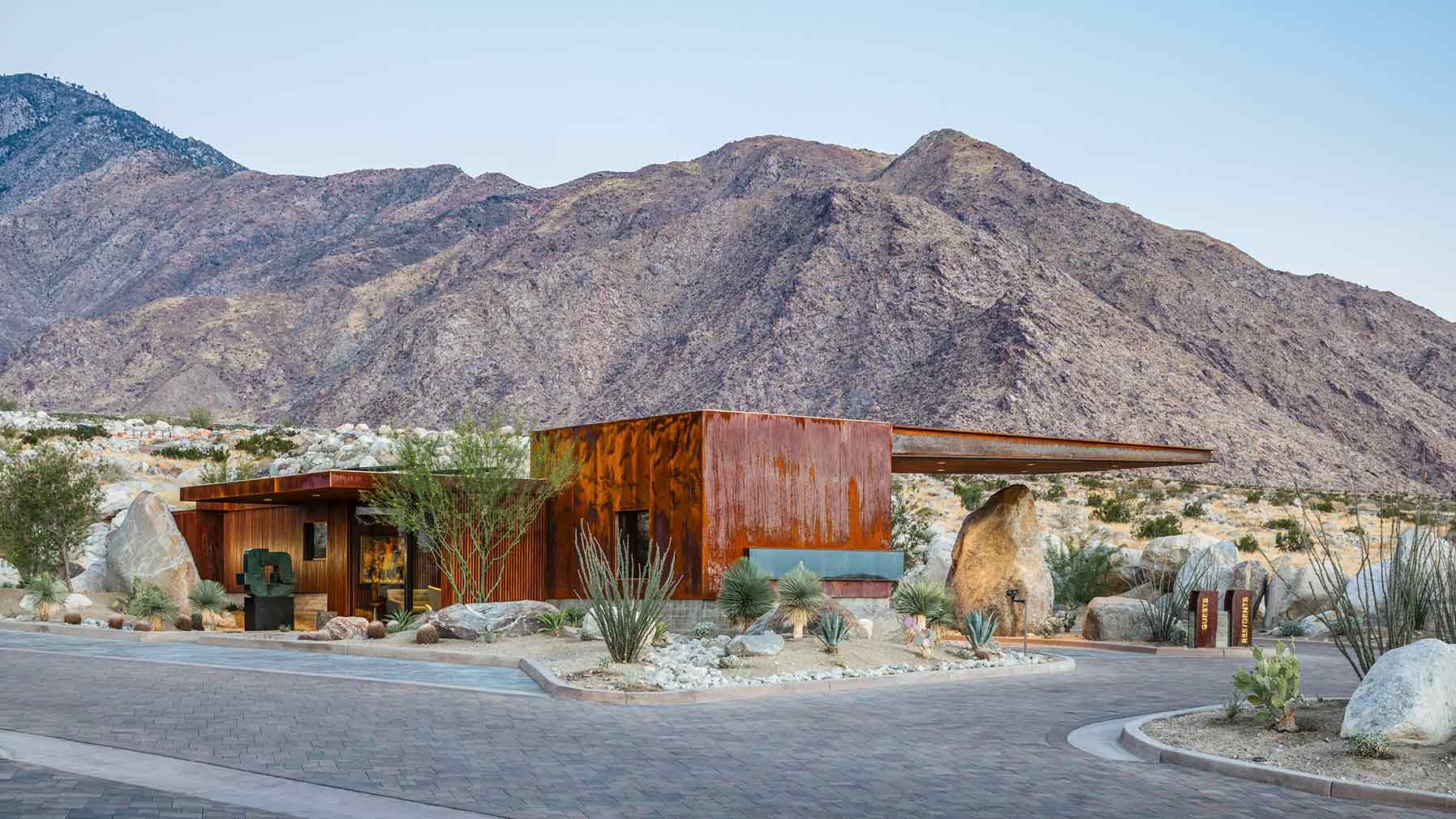
Naturally, client demands have evolved over the years. Lockyer explains that low-maintenance, homes with softer materials and a more raw, organic feel have become more popular, rather than the grand showpieces of the Modernist years. The majority of the materials used for Lockyer’s ‘Schnabel’ houses are left in their organic state and are allowed to weather over the years, with little or no maintenance, like his Guardhouse. He explains: ‘Concrete, masonry, natural stone, woods, steel, glass, aluminum are all materials that we try not to alter or “finish” so patina is allowed to occur naturally.’
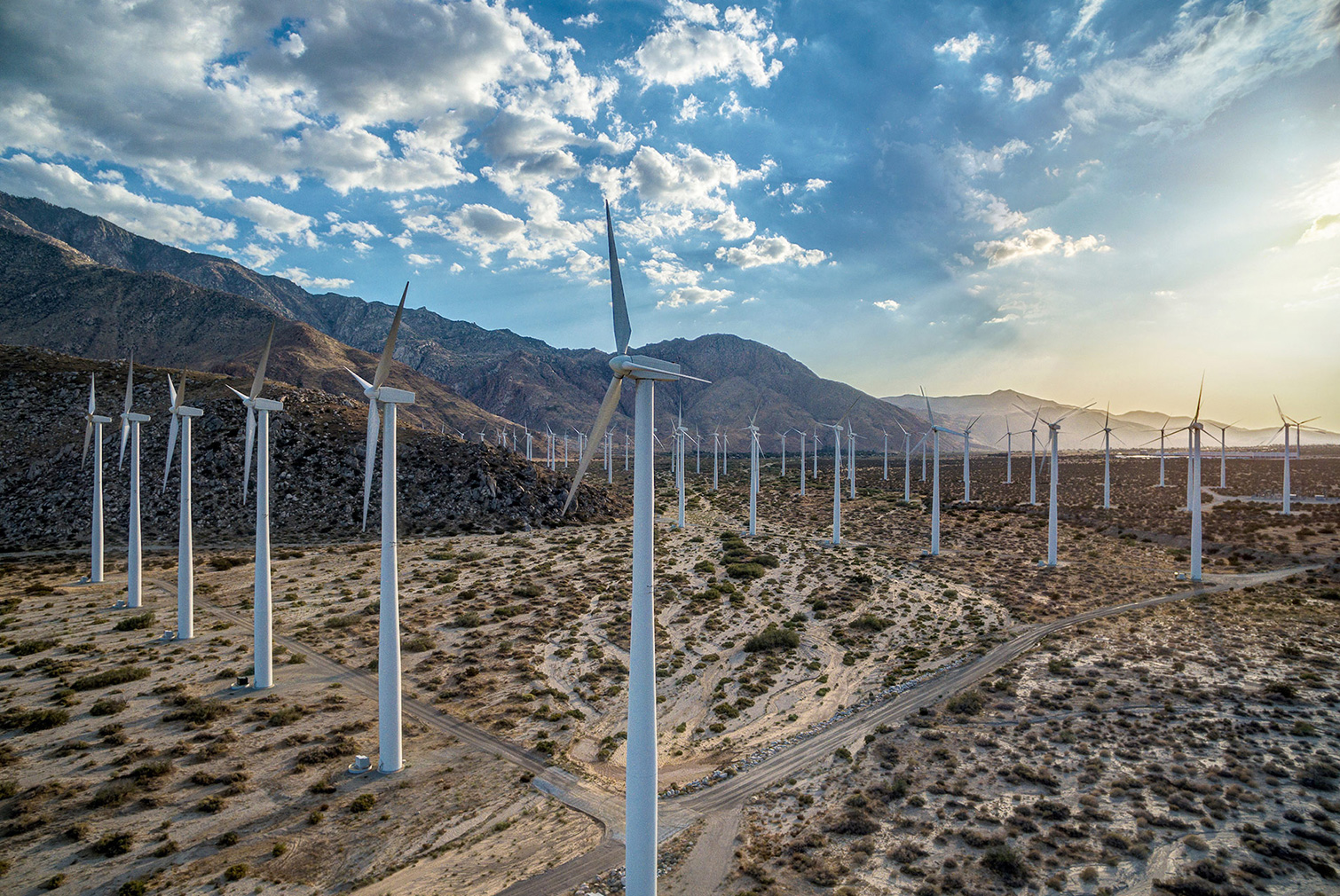
The wider cultural shift, including a new wave of freelancers, also translates into architecture. An office must also act as a living space – and homes must become more agile. Says Lockyer: ‘We’ve seen a response to technology as more people work from home and working life has become more casual.’
Contemporary architects not only have a responsibility to reinvigorate the desert architectural tradition but also enlighten clients. ‘We’re encouraging people to think long term and sustainable,’ Lockyer adds.

Sunnylands Admin Campus, designed by 02 Architecture. Photography: Marco Carocari/The Annenberg Foundation Trust at Sunnylands

Las Palmas Heights House, designed by o2 Architecture. Photography: Lance Gerber Studio

South Palm Canyon Uno House, designed by o2 Architects. Photography: Lance Gerber Studio
Another designer building on the past is Lance O’Donnell from o2 Architecture, who is responsible for three homes in Desert Palisades. His two-storey concept ‘Desert House No.1’ has a lower floor with a minimised footprint to preserve the site’s natural hillside setting, while a second level hovers above.
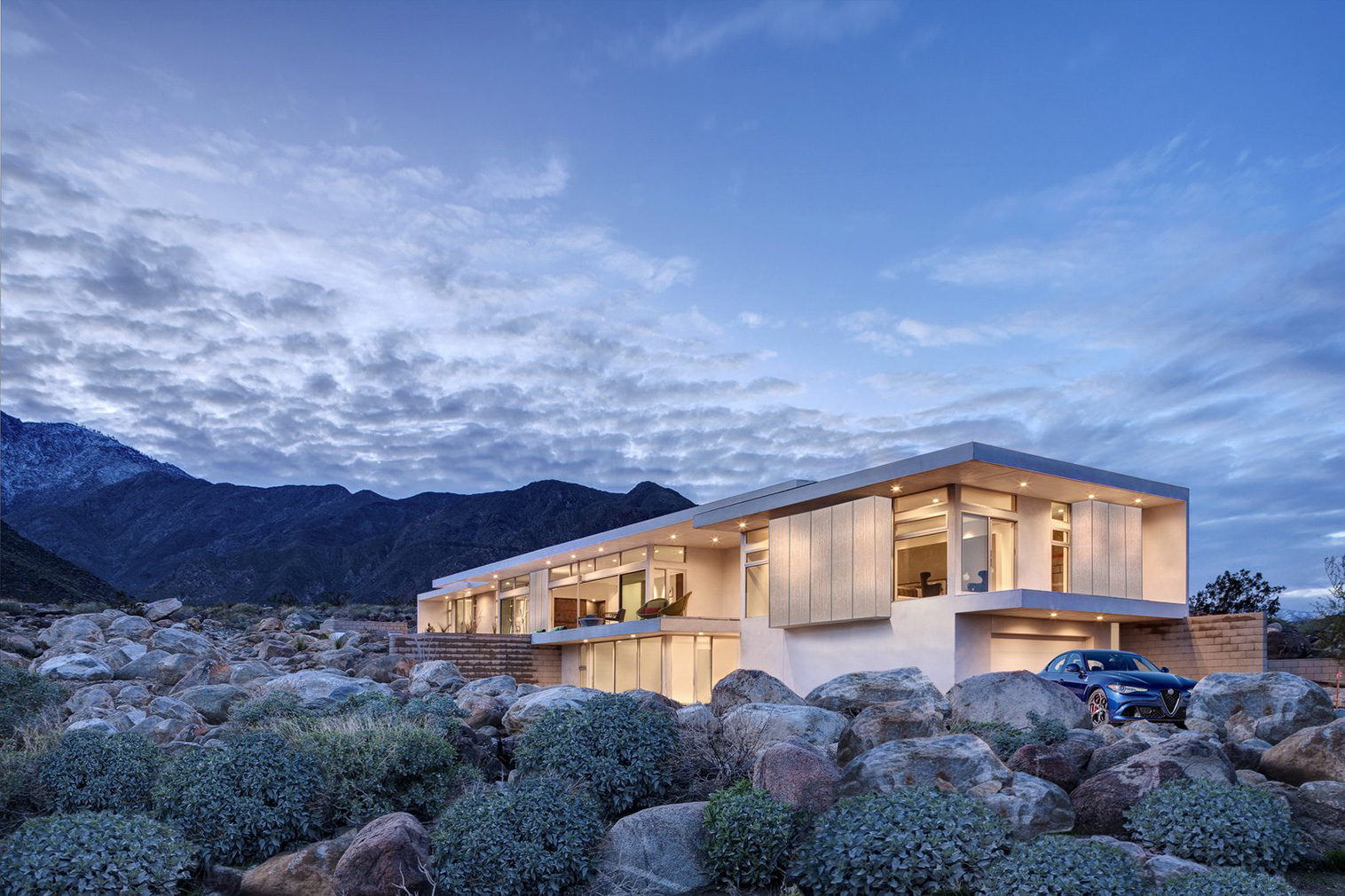
O’Donnell’s ‘Palisades Tres’ offers a twist on the classic courtyard, which spirals up from the lower garage level to main living above. All of his Palisades properties deconstruct the outdoor/indoor living barrier with breathtaking backdrops of endless boulders, desert fauna, and panoramic views of the mountains.
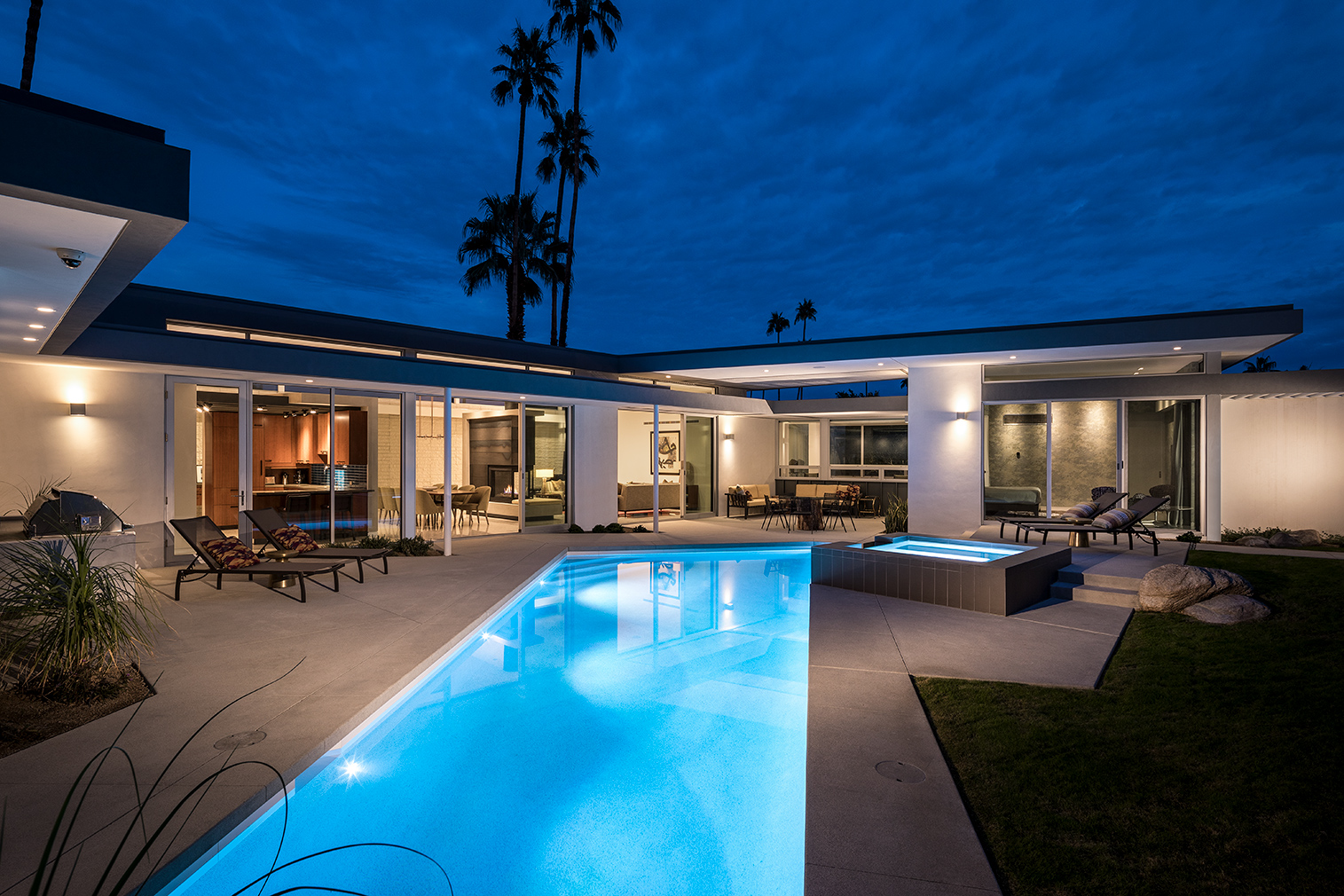
Like Lockyer, he points to a new regional sensibility. ‘Our designs are “of this place”; they take into account the pattern of the sun, seasonal changes, light, wind, rainfall…’ O’Donnell says his very own home is the perfect example of this; the designs’ long east/west axis maximizes southern exposure (passive solar winter heating) and minimises east/west exposure (hot summer sun). The grading on the rocky site was curated to minimise the import/export of boulders and cobble while preserving the natural topography, plants and trees.
O’Donnell has also noticed a trend in clients opting for smaller homes, so perhaps the ostentatious glamour of the mid-century masters is behind us and instead the priority is efficiency and comfort. As O’Donnell puts it: ‘The heavy lifting was done before us so we’re afforded a level of experimentation. Our job is to continually think about things anew to rebirth ideas.’
Read next:
Sacred spaces – take a tour of Palm Springs’ Modernist churches
6 spectacular Palm Springs homes for sale

















